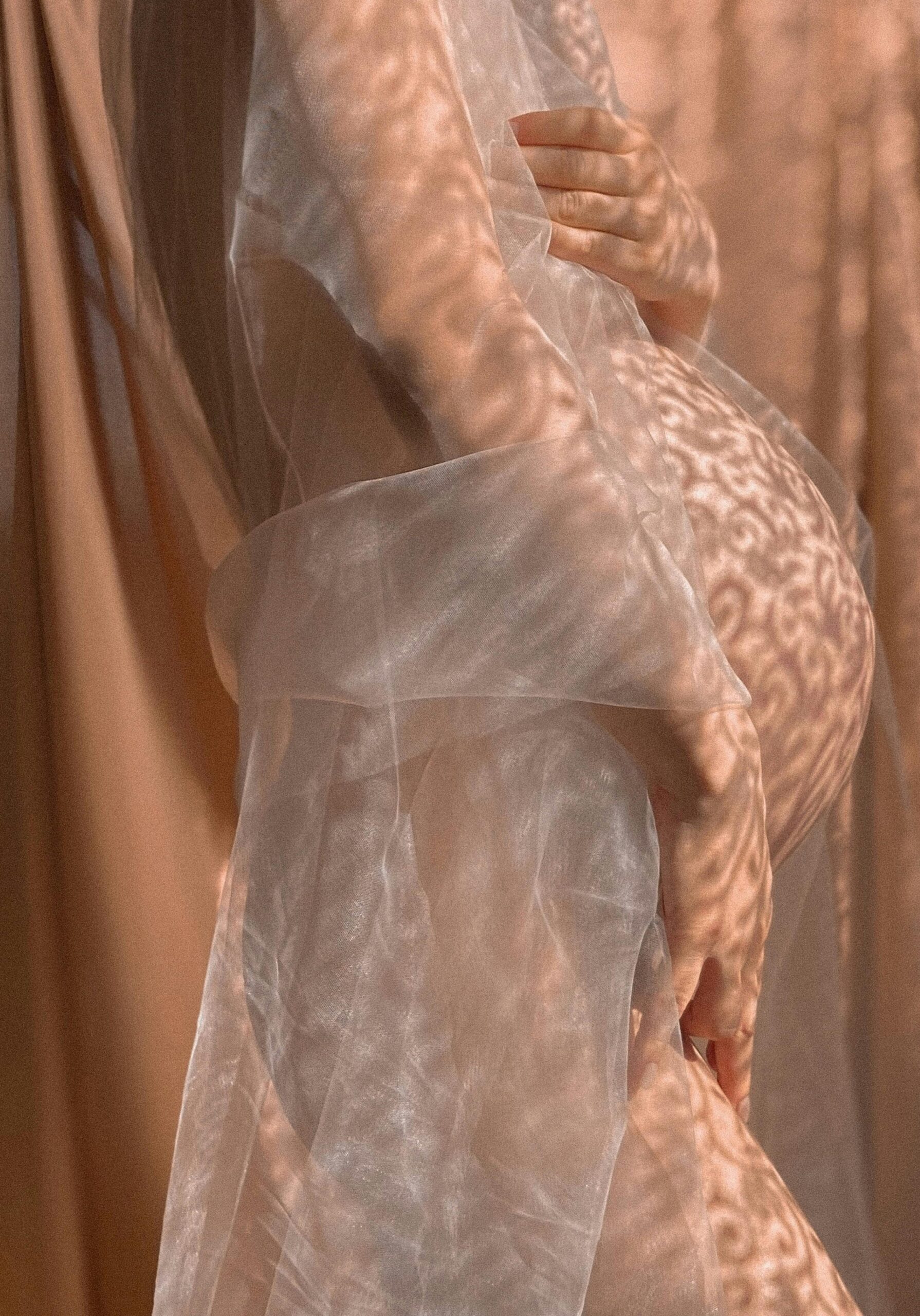A Guide to Pregnancy-Safe Sunscreens

Pregnancy is a beautiful time of transformation,that comes with unique skincare needs—especially when it comes to sun protection. As your body changes, so does your skin’s sensitivity, making sunscreen at the right time more essential than ever. But not all sunscreens are created equal, and especially when you’re growing a tiny human, you want to be sure you’re using products that are both effective and safe.
For moms (-to be) who care deeply about clean beauty, holistic living, and protecting their baby from unnecessary toxins, understanding pregnancy-safe sunscreen options is a must. This gentle, science-backed guide will help you navigate your sun protection choices with confidence, so you can enjoy the sun safely while supporting your skin and your baby.
Why Sunscreen Matters During Pregnancy
Pregnancy hormones like estrogen and progesterone can trigger increased melanin production, leading to a condition called melasma (also known as the “mask of pregnancy”)—dark patches that appear on the cheeks, forehead, and upper lip. Sun exposure can worsen these patches, making sun protection critical.
In addition to aesthetic concerns, your skin may become more sensitive and reactive during pregnancy. Sunburns, irritation, and inflammation can be more intense. Using sunscreen daily helps protect your skin from:
- Premature aging
- Sunburns
- Hyperpigmentation
- Long-term skin damage
- Risk of skin cancer
But choosing a safe sunscreen while pregnant means looking beyond the SPF number.
The Importance of Sunlight for Mom and Baby
While protecting your skin is essential, it’s also important to remember that gentle sun exposure in the right amounts and at the right time of day is incredibly beneficial for both you and your baby. Early morning or late afternoon sunlight can help your body naturally produce vitamin D, which plays a vital role in bone development, immune health, and mood regulation. Research also shows that vitamin D levels during pregnancy can influence birth weight and overall fetal growth. A short daily walk in the sun—even 10-15 minutes—can boost your vitamin D naturally and support both your physical and emotional well-being. As always, balance is key: aim for brief, mindful sun exposure, followed by protection when UV levels rise.
Chemical vs. Mineral Sunscreens: What's the Difference?
There are two main types of sunscreen:
1. Chemical Sunscreens
These absorb UV rays and convert them into heat, which is then released from the skin. Common ingredients include oxybenzone, octinoxate, avobenzone, and homosalate.
Why avoid them during pregnancy? Some chemical filters, especially oxybenzone, are endocrine disruptors. They can mimic hormones, potentially affecting fetal development and interfering with your body’s natural balance. Studies have found oxybenzone in human breast milk, urine, and blood plasma (Matta et al., 2019).
2. Mineral (Physical) Sunscreens
These sit on the skin’s surface and reflect UV rays. The most common ingredients are zinc oxide and titanium dioxide.
Why they’re safer: Mineral sunscreens are generally non-toxic, non-irritating, and safe for sensitive skin. They don’t penetrate the skin and are considered the gold standard for pregnancy-safe sun protection.
Key Ingredients to Avoid in Sunscreen During Pregnancy
To stay on the safe side, avoid sunscreens that include the following:
- Oxybenzone: Hormone disruptor, linked to allergic reactions and potential developmental effects
- Octinoxate: Can disrupt thyroid function and estrogen levels
- Avobenzone: Degrades in sunlight and is often stabilized with other questionable ingredients
- Homosalate: A chemical filter that may accumulate in the body and affect hormone levels
- Fragrance/Parfum: Often includes phthalates, which are linked to reproductive toxicity
What to Look for in a Pregnancy-Safe Sunscreen
When shopping for sunscreen during pregnancy, look for these qualities:
- Mineral-based with zinc oxide and/or titanium dioxide
- Broad-spectrum protection (protects against UVA and UVB)
- SPF 30 or higher
- Fragrance-free and hypoallergenic
- Non-nano particles (to avoid inhalation or absorption of very small particles)
- EWG Verified or made by a clean beauty brand
Nest & Baby-Approved Sunscreen Picks
Want to skip the label-reading and get straight to our favorite non-toxic sunscreens? We’ve curated a list of community-loved pregnancy-safe sunscreens you can trust. These brands are gentle, effective, and perfect for your glowing skin.
[Click here to explore our top picks ➔]
How to Apply Sunscreen Effectively (and Naturally)
Even the safest sunscreen won’t help if it’s not applied correctly. Here are some best practices:
- Apply 15-20 minutes before sun exposure
- Use about 1 teaspoon for the face and 1 shot glass (about 1 ounce) for the body
- Reapply every 2 hours, or after swimming/sweating
- Don’t forget ears, neck, hands, and feet
Pair with physical sun protection: hats, sunglasses, breathable long sleeves
Common Pregnancy Sunscreen Concerns (And Answers)
Will mineral sunscreen leave a white cast?
Some mineral sunscreens can, but many modern formulas use tinted or micronized zinc to blend better into the skin. Look for “sheer” or “invisible” formulas.
Can I use baby sunscreen instead?
Yes, as long as it’s mineral-based and free from harmful additives. Baby sunscreens are often gentle and effective.
What about spray sunscreens?
It’s best to avoid spray formulas, especially aerosol sprays, during pregnancy. They can be inhaled and may contain propellants or nanoparticles. If you do use a spray, apply it to your hands first and then rub onto your skin.
Pregnancy - Safe, non-toxic sunscreen brands we trust:

Lightweight, plant-powered tinted moisturizer with SPF 30. Offers a natural glow and light coverage—perfect for everyday use.
Best for: Daily wear + light makeup look
Non-toxic, cruelty-free, multitasking

Mineral-based and reef-friendly with a universal tint that blends smoothly. Creamy texture with solid UVA/UVB protection.
Best for: Outdoors + a bit of glow
Water-resistant, eco-conscious

Ultra-light and fragrance-free. Ideal for sensitive or acne-prone pregnancy skin.
Best for: Gentle daily protection
EWG Verified, sheer finish, non-greasy

High-performance, water-resistant SPF for active days. No hormone disruptors or harsh chemicals.
Best for: Beach, workouts, heavy sun
SPF 50+, sweat-proof, clean formula

Organic, reef-safe formula with clear zinc that leaves no white cast. Safe for the whole family.
Best for: Eco-conscious moms
USDA Organic, clean ingredients

Designed for pregnant women and babies. Soothes with colloidal oatmeal and protects gently.
Best for: Very sensitive skin
Fragrance-free, baby-safe, calming formula
Holistic Ways to Support Skin Health in the Sun
Sunscreen is just one part of a holistic approach to protecting your skin during pregnancy:
- Hydrate: Drink at least 10-12 cups of water per day to support skin elasticity and reduce sun sensitivity.
- Eat antioxidant-rich foods: Think berries, leafy greens, carrots, and tomatoes.
- Supplement wisely: Ask your healthcare provider about pregnancy-safe antioxidants like vitamin C and E.
- Practice mindful sun exposure: Early morning and late afternoon sun are gentler and safer.
Clean Beauty, Clean Conscience
Choosing pregnancy-safe sunscreen isn’t just about avoiding harsh chemicals—it’s also about aligning with your values. Many mineral sunscreen brands are reef-safe, cruelty-free, and eco-conscious, which fits beautifully with a mindful, holistic lifestyle.
By opting for clean sun care, you’re not only protecting your skin and your baby—you’re also making a choice that honors your body, your health, and the planet.
Final Thoughts: Stay Safe, Mama
Pregnancy is full of changes, and your skincare should evolve with you. Sunscreen might seem like a small detail, but it plays a big role in how you care for your body during this sacred time.
By choosing a mineral-based, non-toxic sunscreen, you can feel good about protecting your radiant skin while keeping your baby safe. Whether you’re enjoying a beach day, a morning walk, or simply sitting in the sun with a smoothie, sun safety is an act of self-love.
You’ve got the glow, mama—let’s keep it protected.
References:
- Matta, M.K., et al. (2019). “Systemic absorption of sunscreen after topical application.” JAMA, 321(21), 2082–2091.
- Environmental Working Group. (2023). Sunscreen Guide. Retrieved from https://www.ewg.org/sunscreen/
- American Academy of Dermatology. (2021). Sun Protection and Skin Care During Pregnancy. https://www.aad.org




